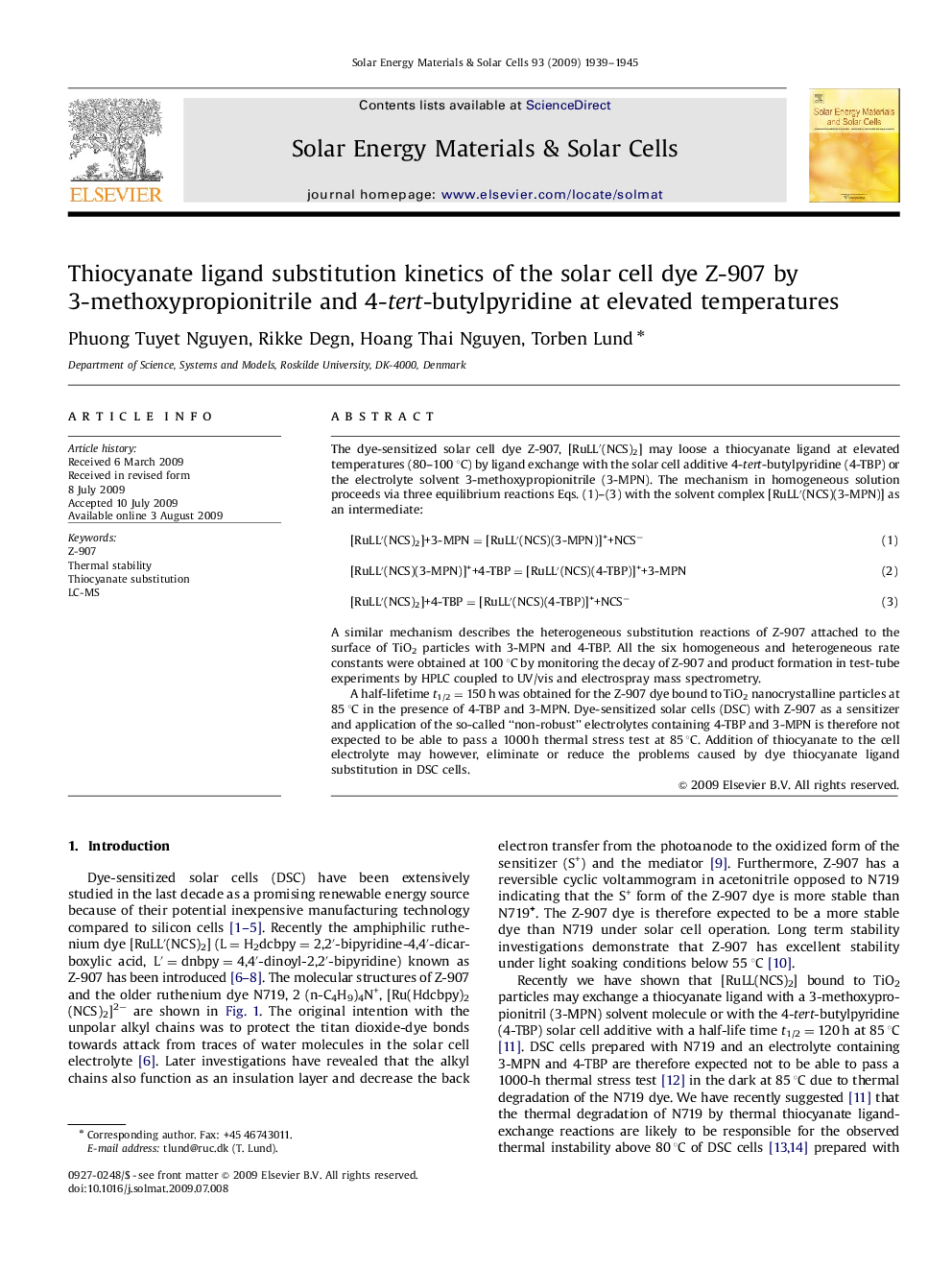| کد مقاله | کد نشریه | سال انتشار | مقاله انگلیسی | نسخه تمام متن |
|---|---|---|---|---|
| 79700 | 49364 | 2009 | 7 صفحه PDF | دانلود رایگان |

The dye-sensitized solar cell dye Z-907, [RuLL′(NCS)2] may loose a thiocyanate ligand at elevated temperatures (80–100 °C) by ligand exchange with the solar cell additive 4-tert-butylpyridine (4-TBP) or the electrolyte solvent 3-methoxypropionitrile (3-MPN). The mechanism in homogeneous solution proceeds via three equilibrium reactions Eqs. (1)–(3) with the solvent complex [RuLL′(NCS)(3-MPN)] as an intermediate:[RuLL′(NCS)2]+3-MPN=[RuLL′(NCS)(3-MPN)]++NCS− (1)[RuLL′(NCS)(3-MPN)]++4-TBP=[RuLL′(NCS)(4-TBP)]++3-MPN (2)[RuLL′(NCS)2]+4-TBP=[RuLL′(NCS)(4-TBP)]++NCS− (3)A similar mechanism describes the heterogeneous substitution reactions of Z-907 attached to the surface of TiO2 particles with 3-MPN and 4-TBP. All the six homogeneous and heterogeneous rate constants were obtained at 100 °C by monitoring the decay of Z-907 and product formation in test-tube experiments by HPLC coupled to UV/vis and electrospray mass spectrometry.A half-lifetime t1/2=150 h was obtained for the Z-907 dye bound to TiO2 nanocrystalline particles at 85 °C in the presence of 4-TBP and 3-MPN. Dye-sensitized solar cells (DSC) with Z-907 as a sensitizer and application of the so-called “non-robust” electrolytes containing 4-TBP and 3-MPN is therefore not expected to be able to pass a 1000 h thermal stress test at 85 °C. Addition of thiocyanate to the cell electrolyte may however, eliminate or reduce the problems caused by dye thiocyanate ligand substitution in DSC cells.
Journal: Solar Energy Materials and Solar Cells - Volume 93, Issue 11, November 2009, Pages 1939–1945